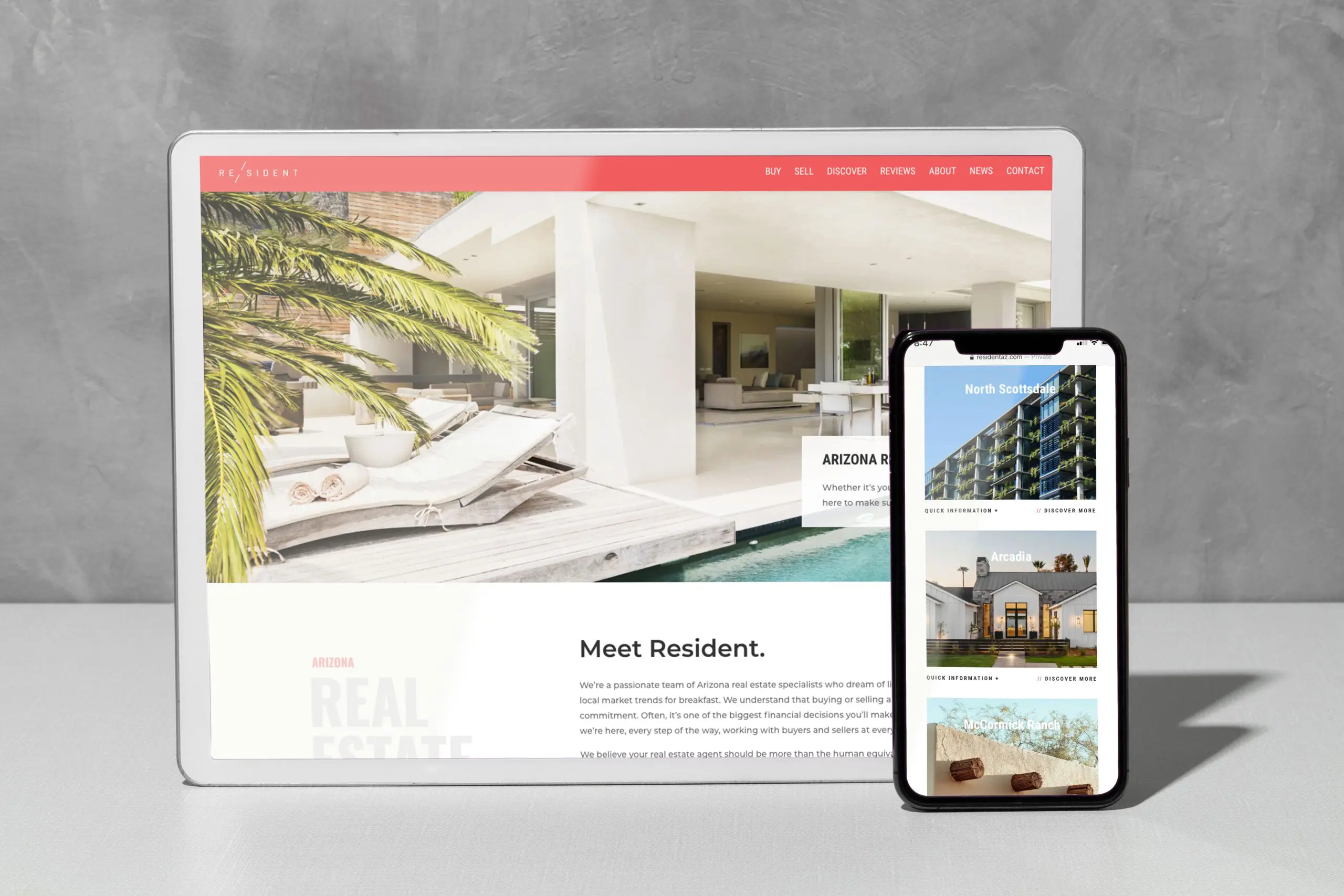
How To Make User Experience Your Most Valuable Brand Asset
Think about the websites you visit regularly. The brands you support and the products you choose to keep around the house or the office. What do they all have in common? Our guess: they’ve figured out how to leverage the user experience to keep you coming back.
Are those websites easy to navigate? Do they give you useful information? Do they make your life easier? Maybe these brands speak your language, or seem like they just get you. Are those products the best, the cheapest, or the easiest to use? These questions (and hundreds more) all relate to your user experience.
The basics of user experience (UX)
First, we should note that there’s no single definition of user experience, user experience research, or user experience design. Even experienced UX designers have a hard time explaining what they do. But there are a few agreed-upon components.
For one, user experience design is about how the end-user (your target audience) experiences your brand, product, website, or some other aspect of your business. Sounds simple, we know. But what does that actually mean in practical terms?
User experience has many dimensions. It exists at the intersection of your brand’s information architecture, digital presence, physical products or services, and how people interact with your brand. The concept of user experience is used throughout many industries, including software design, website design, app design, and more.
It can refer to how users feel when they land on your home page or how simple your e-commerce checkout process is. It can even encompass their experience using the product once it’s been sold, shipped, and unboxed at home.
Smashing Magazine puts it most simply: user experience is how a person feels when interfacing with a system. In modern contexts, that tends to be some sort of human-computer interaction. We’ll focus on turning your brand’s digital user experience into a valuable brand asset.
Top goals of digital UX design
In short, it’s about making sure that your audience can access the value that your brand provides. It’s making sure they get from Point A to Point B successfully.
For example, imagine you’ve got a comprehensive collection of how-to videos for using your product. Unfortunately, they’re buried on your website. The value is there, but your audience can’t get to it. That’s a poorly designed user experience.
Alternatively, suppose there are links to those videos on the home page where they’re easy to find and get to. In that case, your audience will feel like you read their mind—you’re providing answers before they even asked their questions.
UX design is also about:
- Giving users what they need — information, a solution to their problems
- Making things easy — simplify operations, create processes that are second nature
- Creating enjoyable experiences — serving up the right information and features at the right time
- Getting people hooked — making your product, service, or brand part of the daily routine
- Mobilizing brand evangelists — building connections and giving your users opportunities to share their experiences
Does UX really matter?
Absolutely. Now more than ever.
The digital space is more competitive than it was even a few months ago. More brands are trying to capture web user’s attention during mandated lockdowns and stay-at-home orders.
As CWS notes, “With poor UX, you can easily miss the opportunity to nurture prospects, build a loyal audience, and convert users into paying customers.” They go on to predict that user experience will be more valuable than product or price in 2020 (and beyond).
Let’s put it this way. Imagine that you’re going shopping.
You’ve taken the time to put on pants, get in your car, and drive to the store. But when you get there, you can’t figure out how to enter the building. The door is hard to find, or you’re unsure whether you need to push or pull. Or maybe there is no door at all, and the business owner expects you to climb in through the window.
How much time are you willing to spend struggling to get inside, just so you can give someone your money?
Alternatively, good UX design lays out the red carpet, switches on the blinking lights that say “Enter Here,” and assigns a concierge to escort you through the door.
Optimizing your digital UX
So, how do you ensure your users are getting the most out of your digital assets? Start by putting yourself in their shoes. We know this first step can be difficult. Often we’re so close to our own brands that we have significant blindspots. But this exercise is a crucial first step in improving the experience of your digital presence.
Start with your users’ end goals
Putting it as simply as possible, what does your audience want from your brand? The answer here could be obvious. For example, most people visiting your e-commerce site probably want to buy something. But sometimes, the user’s end goal is harder to identify.
This is where the analysis comes in. Tracking users’ behavior on your website, app, or other digital platforms can provide valuable insights into their wants and needs.
Users who spend most of their time on your blog could be saying, “Educate me!” Those who are engaging with you on social media could be interested in community and connection.
During this research phase, we highly recommend creating buyer personas to help segment your audience.
Why? Because what David, the 32-year-old yoga instructor from Connecticut, needs will be significantly different from what Janelle, the 54-year-old software engineer in Seattle, needs.
The buyer persona takes the amorphous term “audience” and makes it more real. Suddenly, you’re not trying to connect with Audience 1 and Audience 2. Instead, you’re trying to figure out what David and Janelle need. And when you’re trying to meet the specific needs of one particular person, you’re less likely to waste time spinning your wheels.
Once you know who your users are and what they need, it’s time to figure out the steps are required to attain their goals. Then? Make it simpler.
Develop a strategy
If you got swept up in Netflix’s 2020 hit miniseries, The Queen’s Gambit, then you know strategy requires you to run through different scenarios, weighing the pros and cons of each as you go. It means staying a step ahead, predicting your audience’s next move, and meeting them where they are.
Use cases and scenario mapping are both useful tools during the strategy development process. This helps you understand precisely how each buyer persona will interact with your brand, where their points of frustration might occur, and how to improve their experience.
Start testing
Now for the fun part. You have your buyer personas, you’ve created some hypotheses about how to improve their experience, and now you get to start implementing changes. But don’t pat yourself on the back and call it a done deal just yet. It’s crucial to monitor the response to your changes and make sure user behavior trends in the right direction.
As CleverTap notes, “There are many ways you can test your hypotheses: from A/B tests and multivariate tests to using control groups and random sampling. And everything in between. All this new data will either confirm or reject the hypotheses you initially formed.”
Questions to ask about your user experience
Is it accessible?
Accessibility should start with the basics. Considering 1 in 4 (a full 25%) of adults in the United States live with disabilities, you’re alienating a significant portion of your target audience if you don’t follow ADA guidelines.
Questions to ask:
- Will someone with visual impairments be able to access information on my site?
- Are my text sizes large enough, or can my site be easily resized?
- Is there enough contrast between the color of my text and my background colors or images?
- Do my videos and audio clips have clearly labeled text transcripts?
Next, you’ll want to consider how information is arranged on your site. This is also known as your site’s information architecture.
Questions to ask:
- Is it clear what my site is about?
- Does the most important information for my audience occur “above the fold”?
- Are important links easy to find and use?
- Is the site easy to navigate?
Is it functional?
A beautiful website is useless if it’s not functional. This is where your web developer or development team may come into play.
Questions to ask:
- Can I improve my site speed?
- Is my site optimized for desktop and mobile?
- Are there broken or missing links?
- For e-commerce, is my checkout process streamlined?
- Is it easy for the user to contact me?
Is it useful?
According to a recent study, the average American has 5 hours of free time every day. If they’re spending some of that time on your website or app, odds are good if your audience landed on your website or app, they’re looking for something specific.
Questions to ask:
- Does my site’s copy provide valuable information, or is it kind of “fluffy”?
- Can a user quickly achieve their end goals (ex. Buy a product, read an article, contact support)?
- Is there an obvious path for the user to follow from point A to point B?
Conclusion
User experience design is a multifaceted and exciting field of research in the digital marketing world. It’s about putting yourself into your audience’s mindset and finding ways to make things easier.
User experience is a critical component of your digital presence, whether you’re trying to build a community, sell a product, or educate your audience. In fact, it’s one of your brand’s most valuable assets because it keeps them coming back to your site.
Recent Posts
How to Rebrand Your Instagram for Better Engagement and Brand Recognition
Your Instagram presence can act as a beacon for brand recognition and customer engagement. It’s about painting a picture so compelling that your audience cannot help but be drawn to […]
Read MoreFrom Clicks to Conversions: The Science of High-Performing Digital Ads
The journey from interest to purchase is often paved with digital advertisements. However, not all digital ads are crafted equally. While some fade into the background, others command attention and […]
Read MoreBrand Consistency Examples That Will Make You Rethink Your Marketing Strategy
A consistent and strategic brand identity across all platforms is not just beneficial; it’s essential. By exploring real-world brand consistency examples, we uncover the immense power of maintaining a coherent […]
Read More3 Ways to Transform Blogs With SEO and Make Google Love Your Content
As marketers and business owners, our goal is to ensure the blogs we publish confidently stride into the spotlight of Google’s top search results. Achieving this requires great content, but […]
Read More



